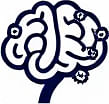Stochastic Processes as a Mental Model
 by Marlene Keeling
by Marlene Keeling
Stochastic processes offer a way to handle randomness in everyday decisions, from business risks to personal growth. This mental model helps in predicting outcomes and adapting strategies, making it essential for professionals and learners alike. Explore its applications and benefits here.

Stochastic processes represent a key concept in thinking about uncertainty and change. These processes involve sequences of events influenced by probability, allowing individuals to model situations where outcomes are not fully predictable.
In psychology, stochastic processes can aid in examining human behavior. For instance, patterns of decision-making often follow random variations. Researchers use stochastic processes to analyze how people respond to uncertainty in daily life. This approach reveals how habits form over time through a series of probabilistic events.
Moving to business strategies, stochastic processes provide tools for forecasting. Companies face unpredictable market shifts, and these processes help in simulating possible scenarios. By applying this mental model, leaders can assess risks and plan accordingly. In one example, a firm might use stochastic models to predict sales fluctuations based on economic indicators.
Cognitive development benefits greatly from this framework as well. Learning often involves trial and error, where outcomes depend on chance. Uncertainty plays a role in how individuals acquire new skills, and stochastic processes illustrate this dynamic. Educators can incorporate these ideas to design programs that account for variable progress rates among students.
Applications in Daily Life
One practical way to apply stochastic processes is in personal finance. People deal with investments that fluctuate due to market forces. By viewing savings as a stochastic system, individuals can better prepare for volatility and make informed choices. This mental model encourages a balanced approach to risk-taking.
In team settings, stochastic processes can improve collaboration. Projects rarely proceed in a straight line; instead, they encounter random delays or opportunities. Managers who recognize this can adjust timelines and resources, leading to more resilient operations.
Building Better Habits
Developing routines often mirrors stochastic elements. For example, exercise routines might vary based on daily energy levels or external factors. Using stochastic processes as a guide, one can track patterns over time and identify trends that lead to success. This method promotes adaptability and long-term growth.
Professionals in various fields find value in this model. In healthcare, doctors use it to predict patient recovery paths, which are seldom linear. By considering probability, they can tailor treatments more effectively.
Challenges and Insights
While helpful, working with stochastic processes requires awareness of limitations. Data collection is crucial, as accurate models depend on reliable information. In cognitive terms, this means being mindful of biases that might skew perceptions of randomness.
Over time, familiarity with stochastic processes enhances critical thinking. It allows for clearer evaluation of options in ambiguous situations. For lifelong learners, this model fosters a mindset geared toward exploration and adaptation.
In creative pursuits, stochastic processes inspire innovation. Artists and writers might experiment with random elements in their work, leading to unexpected results. This approach underscores the role of chance in fostering originality.
Integrating into Strategies
To incorporate this mental model, start with simple exercises. Track daily activities and note any random influences on outcomes. Over weeks, patterns may emerge, offering insights into more complex decisions.
Businesses can integrate stochastic tools through software that simulates scenarios. This practice sharpens strategic planning and prepares teams for various possibilities.
Ultimately, stochastic processes serve as a bridge between theory and practice. They empower individuals to navigate change with confidence, drawing from principles of probability to inform actions.
In summary, embracing stochastic processes as a mental model opens doors to better decision-making across disciplines. Whether in psychology, business, or personal development, this framework highlights the importance of probability in shaping effective strategies.
